 Search by Keyword
Sign Up Below for our MONTHLY BEATLES TRIVIA QUIZ!
|
“I’VE JUST SEEN A FACE”
(John Lennon – Paul McCartney)
 Always in the frame of mind to try something new, The Beatles returned to the recording studio in June of 1965 after a month-long break to record their first ever fully-acoustic song. While previous tracks, such as “And I Love Her” and “You’ve Got To Hide Your Love Away,” kept strictly to acoustic guitars, McCartney always accompanied John and George with his electric Hofner violin-shaped bass guitar for the low end. Always in the frame of mind to try something new, The Beatles returned to the recording studio in June of 1965 after a month-long break to record their first ever fully-acoustic song. While previous tracks, such as “And I Love Her” and “You’ve Got To Hide Your Love Away,” kept strictly to acoustic guitars, McCartney always accompanied John and George with his electric Hofner violin-shaped bass guitar for the low end.
This time around, however, no bass guitar is played at all. Instead, Paul himself joins them on acoustic guitar and, with Ringo on brushed snare drum and maracas, the song “I’ve Just Seen A Face” becomes “The Beatles Unplugged” for the very first time!
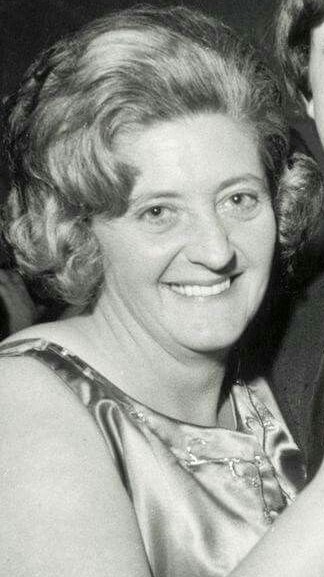
Paul's Auntie Gin
Songwriting History
“That’s Paul,” was the statement from John Lennon in 1980 when asked about the authorship of “I’ve Just Seen A Face.” Paul agrees: “I think of this as totally by me.”
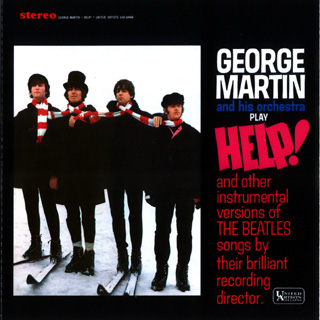 There is a certain unknown element involved in outlining the time of writing for this song. This is due to the fact that Paul had been known to play an instrumental version of this song on piano at family get-togethers for some time. His Antie Gin (the relative that was immortalized in his 1976 hit “Let ‘Em In”) was quite fond of it at the time, which led to Paul referring to the piece as “Antie Gin’s Theme.” This fact was known by George Martin, who released an orchestrated version of the song using that title in America on his album “George Martin And His Orchestra Play Help!” There is a certain unknown element involved in outlining the time of writing for this song. This is due to the fact that Paul had been known to play an instrumental version of this song on piano at family get-togethers for some time. His Antie Gin (the relative that was immortalized in his 1976 hit “Let ‘Em In”) was quite fond of it at the time, which led to Paul referring to the piece as “Antie Gin’s Theme.” This fact was known by George Martin, who released an orchestrated version of the song using that title in America on his album “George Martin And His Orchestra Play Help!”
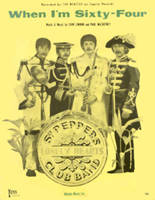 It is a known fact that Paul had been dabbling at writing and performing songs on the keyboards for many years. This is evidenced by his performing a piano rendition of “When I’m Sixty Four” during The Beatles Hamburg shows whenever the electricity went out. And that song was said to have been written when he was “about 15,” dating it either in 1957 or 1958. This being the case, the melody of “I’ve Just Seen A Face” could possibly date back that far as well. It is a known fact that Paul had been dabbling at writing and performing songs on the keyboards for many years. This is evidenced by his performing a piano rendition of “When I’m Sixty Four” during The Beatles Hamburg shows whenever the electricity went out. And that song was said to have been written when he was “about 15,” dating it either in 1957 or 1958. This being the case, the melody of “I’ve Just Seen A Face” could possibly date back that far as well.
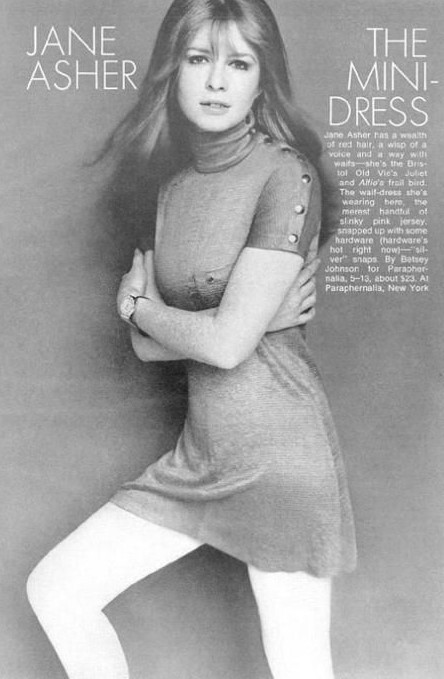 Another piece to the puzzle, however, is that Barry Miles, co-author of Paul’s book “Many Years From Now,” indicates twice that the song was written at 57 Wimpole Street in London. This was the residence of the Asher family where Paul lived during his long courtship with their daughter Jane. Since Lennon / McCartney songwriting didn’t occur here until the latter months of 1963, the lyrics and final conception of the song couldn’t have happened until after this time. Being that the lyrics to this song seem to be talking about his love for Jane Asher, this all seems to fit together. Another piece to the puzzle, however, is that Barry Miles, co-author of Paul’s book “Many Years From Now,” indicates twice that the song was written at 57 Wimpole Street in London. This was the residence of the Asher family where Paul lived during his long courtship with their daughter Jane. Since Lennon / McCartney songwriting didn’t occur here until the latter months of 1963, the lyrics and final conception of the song couldn’t have happened until after this time. Being that the lyrics to this song seem to be talking about his love for Jane Asher, this all seems to fit together.
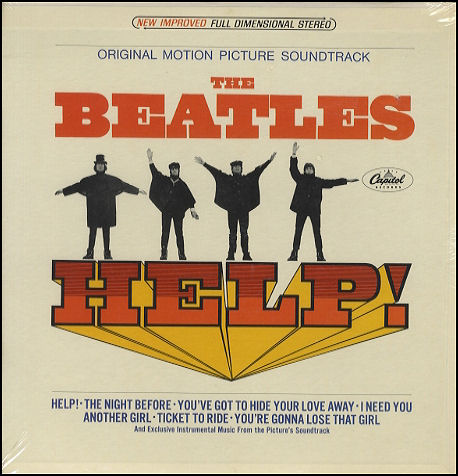 Since the song didn’t appear in the studio until June of 1965, however, it seems reasonable that these finishing touches didn’t get done until the mid-May to mid-June period of 1965 as The Beatles were taking a needed rest period after filming for the movie “Help!” was completed. Having a natural bent to extend the musical boundaries of The Beatles from the usual four-piece electric guitar R&B mentality, Paul developed this previously written piano exercise into something different for the group. Since the song didn’t appear in the studio until June of 1965, however, it seems reasonable that these finishing touches didn’t get done until the mid-May to mid-June period of 1965 as The Beatles were taking a needed rest period after filming for the movie “Help!” was completed. Having a natural bent to extend the musical boundaries of The Beatles from the usual four-piece electric guitar R&B mentality, Paul developed this previously written piano exercise into something different for the group.
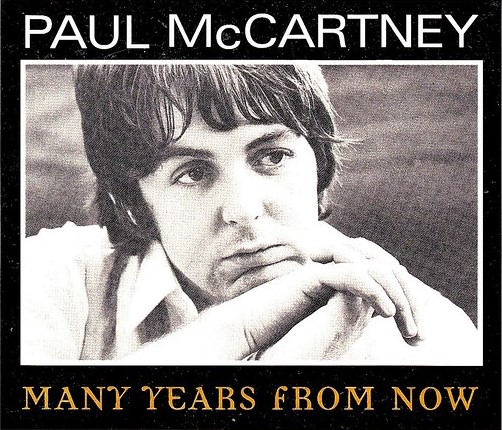 “It was slightly country and western from my point of view,” Paul stated in his book "Many Years From Now." “It was faster, though, it was a strange uptempo thing. I was quite pleased with it. The lyric works: it keeps dragging you forward, it keeps pulling you to the next line, there’s an insistent quality to it that I liked.” “It was slightly country and western from my point of view,” Paul stated in his book "Many Years From Now." “It was faster, though, it was a strange uptempo thing. I was quite pleased with it. The lyric works: it keeps dragging you forward, it keeps pulling you to the next line, there’s an insistent quality to it that I liked.”
Recording History
 It had been over a month since The Beatles set foot into a recording studio, May 10th of 1965 being their last session, which produced their tracks “Dizzy Miss Lizzy” and “Bad Boy” specifically for Capitol Records to include on their “Beatles VI” album. After a rest period from most Beatles-related projects, they were ushered back into EMI Studio Two on June 14th of that year with the intention of recording the remainder of the soon-to-be-released “Help!” soundtrack LP. It had been over a month since The Beatles set foot into a recording studio, May 10th of 1965 being their last session, which produced their tracks “Dizzy Miss Lizzy” and “Bad Boy” specifically for Capitol Records to include on their “Beatles VI” album. After a rest period from most Beatles-related projects, they were ushered back into EMI Studio Two on June 14th of that year with the intention of recording the remainder of the soon-to-be-released “Help!” soundtrack LP.
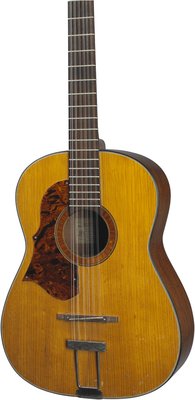 The first of two sessions on this day ran from 2:30 to 5:30 pm and resulted in a pair of excellent Paul McCartney compositions being recorded, the first being “I’ve Just Seen A Face.” At the beginning of "take three," which was included on "Anthology 4," as Paul was rehearsing his "di, di, di" vocal parts, George alerts him that the "light's on," indicating that the tape is rolling. Lennon then comments, "Lonnie's gonna regret not singing this one," this showing his noticing that the song resembles Lonnie Donegan's skiffle hits that were an early musical inspiration for The Beatles, such as his international smash hit "Rock Island Line." After Paul counted off the song, John calls it to a halt, stating, "sorry, I bumped." Paul then counts out what amounts to "take three" with Harrison on 12-string Framus Hootenanny acoustic guitar playing bass notes as well as the song's solo, John strumming his Gibson "Jumbo" 6-string acoustic, Paul on his Epiphone Texan acoustic guitar playing the ascending introductory lines, and Ringo on rhythmic snare drumming with brushes. All of these elements are recorded onto track one of the four-track tape, McCartney's vocals being captured onto track three. On this take, Paul sings "di, di, di" at the end of verses one through three, humming the conclusion of verse four. The first of two sessions on this day ran from 2:30 to 5:30 pm and resulted in a pair of excellent Paul McCartney compositions being recorded, the first being “I’ve Just Seen A Face.” At the beginning of "take three," which was included on "Anthology 4," as Paul was rehearsing his "di, di, di" vocal parts, George alerts him that the "light's on," indicating that the tape is rolling. Lennon then comments, "Lonnie's gonna regret not singing this one," this showing his noticing that the song resembles Lonnie Donegan's skiffle hits that were an early musical inspiration for The Beatles, such as his international smash hit "Rock Island Line." After Paul counted off the song, John calls it to a halt, stating, "sorry, I bumped." Paul then counts out what amounts to "take three" with Harrison on 12-string Framus Hootenanny acoustic guitar playing bass notes as well as the song's solo, John strumming his Gibson "Jumbo" 6-string acoustic, Paul on his Epiphone Texan acoustic guitar playing the ascending introductory lines, and Ringo on rhythmic snare drumming with brushes. All of these elements are recorded onto track one of the four-track tape, McCartney's vocals being captured onto track three. On this take, Paul sings "di, di, di" at the end of verses one through three, humming the conclusion of verse four.
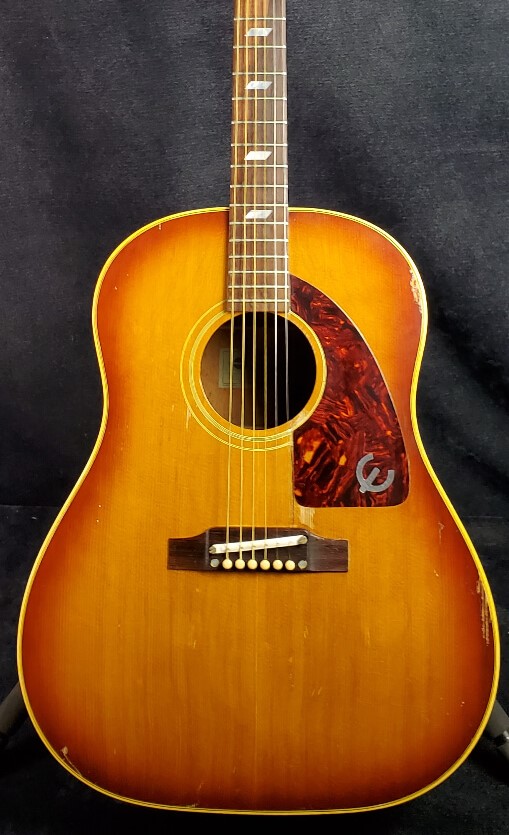 After six takes, the rhythm track was then deemed complete. Overdubs were immediately performed onto "take six," these being Paul doubling his jangly introductory lead acoustic guitar part on his Epiphone Texan acoustic guitar, Ringo shaking the maracas during the refrains as well as during the instrumental section of the song, and Paul harmonizing with himself on the refrains, these overdubs filling the remaining two tracks of the four-track tape. Paul also harmonized with himself during the final refrain, but a decision was apparently made to forgo this ingredient during the mixing sessions. You can, however, faintly hear bits of this harmony part in the right channel of the stereo mix. After six takes, the rhythm track was then deemed complete. Overdubs were immediately performed onto "take six," these being Paul doubling his jangly introductory lead acoustic guitar part on his Epiphone Texan acoustic guitar, Ringo shaking the maracas during the refrains as well as during the instrumental section of the song, and Paul harmonizing with himself on the refrains, these overdubs filling the remaining two tracks of the four-track tape. Paul also harmonized with himself during the final refrain, but a decision was apparently made to forgo this ingredient during the mixing sessions. You can, however, faintly hear bits of this harmony part in the right channel of the stereo mix.
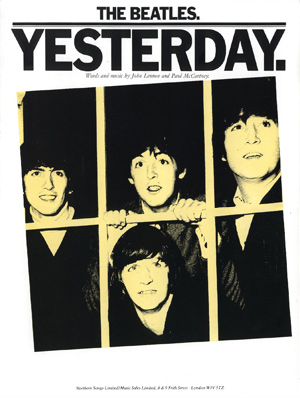 With these overdubs now complete, the song was finished at approximately 4 pm. The following hour-and-a-half of this recording session was taken up with fully recording Paul’s second song of the day, the ear-shattering “I’m Down.” And, after another hour and a half to recuperate, they returned to the studio for a second session to record the acoustic guitar and vocal track for Paul’s beautiful ballad “Yesterday.” All in all, this one day resulted in three excellent songs in three diametrically opposed genres each composed by Paul McCartney, showing his immense versatility. With these overdubs now complete, the song was finished at approximately 4 pm. The following hour-and-a-half of this recording session was taken up with fully recording Paul’s second song of the day, the ear-shattering “I’m Down.” And, after another hour and a half to recuperate, they returned to the studio for a second session to record the acoustic guitar and vocal track for Paul’s beautiful ballad “Yesterday.” All in all, this one day resulted in three excellent songs in three diametrically opposed genres each composed by Paul McCartney, showing his immense versatility.
 Both the mono and stereo mixes of “I’ve Just Seen A Face” were made on June 18th, 1965 in the EMI Studio Two control room by producer George Martin assited by engineers Norman Smith and Phil McDonald. The mono mix unintentionally includes a voice at the very end of the song as the final chord fades away, which probably was due to an engineer not turning down the faders on the other tracks during the mixing session. The stereo mix, however, does not include this voice so it was probably noticed during the mono mix, although they never went back to correct it. Both the mono and stereo mixes of “I’ve Just Seen A Face” were made on June 18th, 1965 in the EMI Studio Two control room by producer George Martin assited by engineers Norman Smith and Phil McDonald. The mono mix unintentionally includes a voice at the very end of the song as the final chord fades away, which probably was due to an engineer not turning down the faders on the other tracks during the mixing session. The stereo mix, however, does not include this voice so it was probably noticed during the mono mix, although they never went back to correct it.
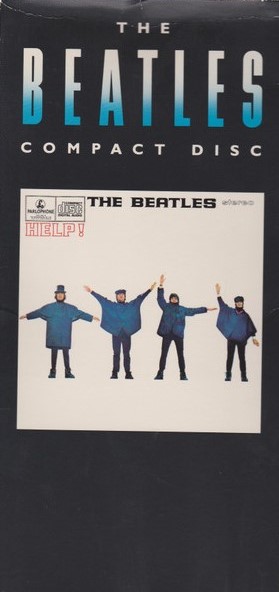 A further stereo mix of the song with added reverb was made in 1986 by George Martin in preparation for the British “Help!” album being released on compact disc for the first time. This mix has also been used on the remastered version of the CD, which was released in 2009, as well as the American "Rubber Soul" CD that was released in 2014. A further stereo mix of the song with added reverb was made in 1986 by George Martin in preparation for the British “Help!” album being released on compact disc for the first time. This mix has also been used on the remastered version of the CD, which was released in 2009, as well as the American "Rubber Soul" CD that was released in 2014.
Sometime in 2025, producer Giles Martin, with engineers Joe Wyatt and Greg McAllister, created a mix of "take three" of the original EMI session for "I've Just Seen A Face" to be featured on "Anthology 4," this set being released in various editions in 2025 as detailed below.
 Another recording session concerning the song “I’ve Just Seen A Face” occurred during May or June of 1976, but this time by Paul McCartney and Wings. This live recording was included on Paul's “Wings Over America” triple album set, which contained five Beatles' songs. Then on January 25th, 1991, Paul recorded the song again during his intimate "Unplugged" concert for MTV. This version ended up on his "Unplugged (The Official Bootleg)" album later that year. Another recording session concerning the song “I’ve Just Seen A Face” occurred during May or June of 1976, but this time by Paul McCartney and Wings. This live recording was included on Paul's “Wings Over America” triple album set, which contained five Beatles' songs. Then on January 25th, 1991, Paul recorded the song again during his intimate "Unplugged" concert for MTV. This version ended up on his "Unplugged (The Official Bootleg)" album later that year.
Song Structure and Style
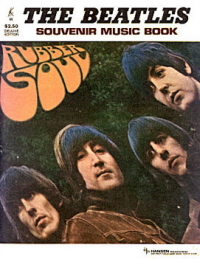 The Lennon / McCartney songbook has been, as we’ve seen, chock full of fusing many genres of music together into one. In “I’ve Just Seen A Face,” they appear to have outdone themselves. Country and Western, Bluegrass, Folk, Blues and Pop music ingredients are melded together here within a fast 4/4 time signature that makes your pulse race. The Lennon / McCartney songbook has been, as we’ve seen, chock full of fusing many genres of music together into one. In “I’ve Just Seen A Face,” they appear to have outdone themselves. Country and Western, Bluegrass, Folk, Blues and Pop music ingredients are melded together here within a fast 4/4 time signature that makes your pulse race.
McCartney returns to the use of a refrain (“falling, yes I am falling…”) like his similarly structured “All My Loving” from 1963, although the similarities to this song pretty much end there. The basic structure this time around consists of ‘verse/ verse/ refrain/ verse/ refrain/ verse (solo)/ refrain/ verse/ refrain/ refrain/ refrain’ (or aababababbb). Adding to this a compelling lengthy introduction and a suitable conclusion, we’re treated to a breathless two-minute-and-four-second roller-coaster ride.
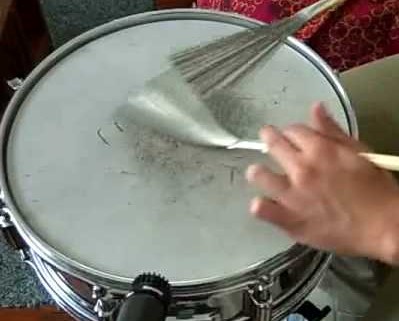 It appears that this ten-measure instrumental introduction has a different time signature than the standard 4/4 we’ll hear throughout the body of the song, but this is actually an illusion. The double-tracked triplet-styled riffs of Paul McCartney create this effect, as well as there being no backbeat from Ringo as of yet. However, if we use the first two acoustic bass notes from George Harrison’s 12-string guitar as a countdown and disregard the Paul’s triplets, we can hear the introduction as four-in-the-bar just as easily as when Ringo’s brushed snare drum kicks in on the first measure of the first verse. It appears that this ten-measure instrumental introduction has a different time signature than the standard 4/4 we’ll hear throughout the body of the song, but this is actually an illusion. The double-tracked triplet-styled riffs of Paul McCartney create this effect, as well as there being no backbeat from Ringo as of yet. However, if we use the first two acoustic bass notes from George Harrison’s 12-string guitar as a countdown and disregard the Paul’s triplets, we can hear the introduction as four-in-the-bar just as easily as when Ringo’s brushed snare drum kicks in on the first measure of the first verse.
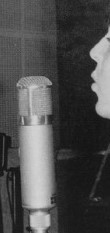 The home key of A major finally becomes apparent as the first 12-measure verse begins, with Paul rattling off his rapid-fire vocals in excitement about his new love. The melody line only has a range of five notes but is skillfully repeated identically even though the chords change beneath it. The first nine measures of this first verse, in fact, is competently sung by Paul in one breath and is single-tracked, which suitably adds a personal touch to his story. As if to let his sentiment sink in, he ends the verse with a six-note hummed melody line which, as we’ll see later, becomes the final trademark of the song. The home key of A major finally becomes apparent as the first 12-measure verse begins, with Paul rattling off his rapid-fire vocals in excitement about his new love. The melody line only has a range of five notes but is skillfully repeated identically even though the chords change beneath it. The first nine measures of this first verse, in fact, is competently sung by Paul in one breath and is single-tracked, which suitably adds a personal touch to his story. As if to let his sentiment sink in, he ends the verse with a six-note hummed melody line which, as we’ll see later, becomes the final trademark of the song.
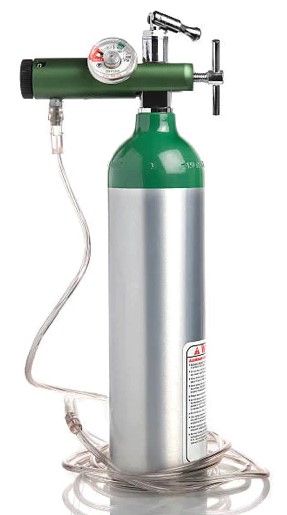 A second verse then begins which is identical in structure although McCartney can’t quite make it through the entire nine measures in one breath this time around – he runs out of oxygen after the words “never beeeen aware.” One other noticeable difference is that the ending six-note melody line now appears as “lie-di-di-di-n-di.” A second verse then begins which is identical in structure although McCartney can’t quite make it through the entire nine measures in one breath this time around – he runs out of oxygen after the words “never beeeen aware.” One other noticeable difference is that the ending six-note melody line now appears as “lie-di-di-di-n-di.”
The first eight-measure refrain now occurs, which has the melody line open up beyond the five notes of the verses and also introduces Paul harmonizing with himself throughout. Ringo also adds maracas for the first time in the song, although they stop suddenly as the refrain ends.
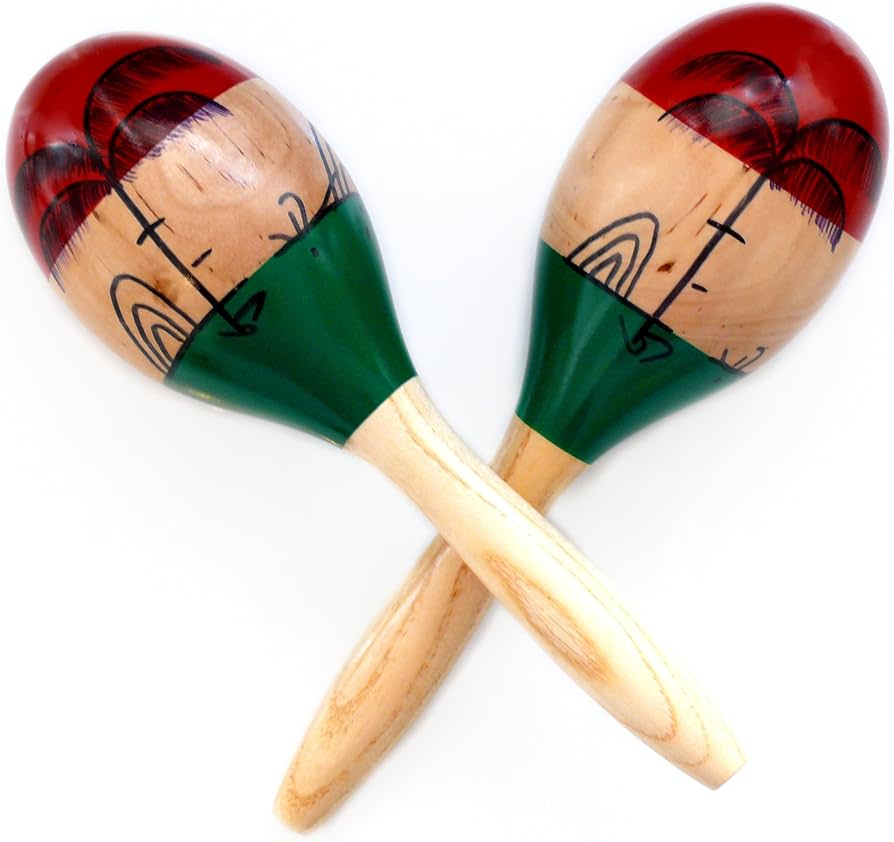 After a third structurally identical verse, which shows Paul’s voice warble and gasp for air after the words “out of sight,” we hear the joyous refrain repeated as well. The instrumental section then appears which is played above the chord pattern of a verse. George strictly plays the melody line on his 12-string for the first nine measures and then plays a welcome lower version of the six-note ending melody line before ending with a sighing flourish just before the refrain is repeated yet again. To add some depth to the solo section, Ringo maintains his maraca overdub from the previous refrain. Also noticeable is Paul's overdubbed harmony exclaiming an ad-libbed "ay...bob-a-dop-bob" as the guitar solo begins. After a third structurally identical verse, which shows Paul’s voice warble and gasp for air after the words “out of sight,” we hear the joyous refrain repeated as well. The instrumental section then appears which is played above the chord pattern of a verse. George strictly plays the melody line on his 12-string for the first nine measures and then plays a welcome lower version of the six-note ending melody line before ending with a sighing flourish just before the refrain is repeated yet again. To add some depth to the solo section, Ringo maintains his maraca overdub from the previous refrain. Also noticeable is Paul's overdubbed harmony exclaiming an ad-libbed "ay...bob-a-dop-bob" as the guitar solo begins.
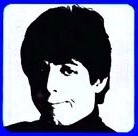 The first verse is then heard again as we hear Paul barely make it through all nine measures in one breath this time around, the final word “met” being almost inaudible. The six-note ending melody line is this time a combination of the two used elsewhere in the song, culminating into “mm-mm-mm-lie-di-di.” The first verse is then heard again as we hear Paul barely make it through all nine measures in one breath this time around, the final word “met” being almost inaudible. The six-note ending melody line is this time a combination of the two used elsewhere in the song, culminating into “mm-mm-mm-lie-di-di.”
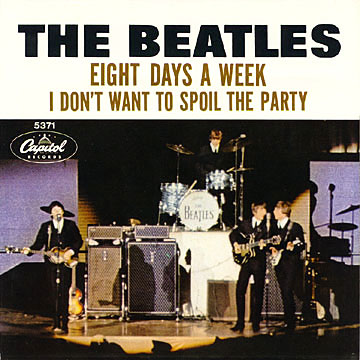 While a three-times repeat of the key figure of the song has become commonplace in Beatles compositions up to this point (as in “Eight Days A Week” and “What You’re Doing” for example), they actually repeat the full refrain three times in a row this time around. The third time through, however, Paul mixes it up by adding an “oh” just before the one beat to give the effect of actually “falling” as the lyrics depict. While a three-times repeat of the key figure of the song has become commonplace in Beatles compositions up to this point (as in “Eight Days A Week” and “What You’re Doing” for example), they actually repeat the full refrain three times in a row this time around. The third time through, however, Paul mixes it up by adding an “oh” just before the one beat to give the effect of actually “falling” as the lyrics depict.
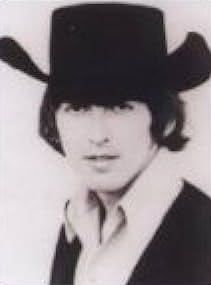 This final refrain is actually extended by one measure to a total of nine in order to include a satisfying conclusion to the song. You guessed it, the six-note melody line that ends each verse becomes the identifying trademark of the song, this time played by George note-for-note on his 12-string. With one final countrified guitar strum, the roller-coaster ride is complete. One only wants to get back in line to ride again! This final refrain is actually extended by one measure to a total of nine in order to include a satisfying conclusion to the song. You guessed it, the six-note melody line that ends each verse becomes the identifying trademark of the song, this time played by George note-for-note on his 12-string. With one final countrified guitar strum, the roller-coaster ride is complete. One only wants to get back in line to ride again!
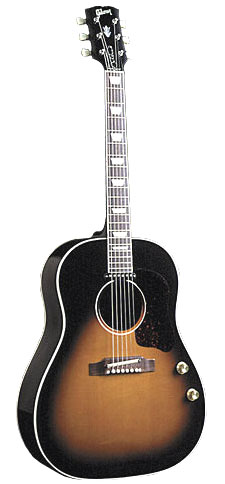 Paul is in top form throughout this song, with his animated vocal delivery and acoustic guitar versatility. George was also up for the task with his characteristic 12-string bass accents and rhythm work, not to mention his well-crafted solo. John’s rhythm guitar is low in the mix and acts as a backwash to the proceedings while Ringo, ever the Country and Western fan, knew all too instinctively how to add a convincing bluegrass feel to the song with brushed snare and maracas. Paul is in top form throughout this song, with his animated vocal delivery and acoustic guitar versatility. George was also up for the task with his characteristic 12-string bass accents and rhythm work, not to mention his well-crafted solo. John’s rhythm guitar is low in the mix and acts as a backwash to the proceedings while Ringo, ever the Country and Western fan, knew all too instinctively how to add a convincing bluegrass feel to the song with brushed snare and maracas.
Upon examination, Paul must have worked painstakingly to put together rhymes that fit strategically within the framework of each verse. First of all, looking at the first verse, he rhymed the first beat of the second and fourth measure (“face” with “place”) while rhyming the first beat of the third, fifth and ninth measure (“forget,” “met” and “met”…OK, I guess that wasn’t all that clever).
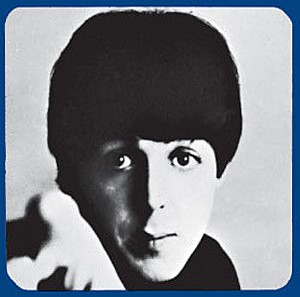 While going through the same exercise for the second verse, he even had to pronounce words in a certain way to pull it off. For instance, the word “been” became the British exaggerated “beeeen” in order to rhyme (sort of) with “dream.” This verse also pronounces “aware” with a British accent as “awere” in order to rhyme with “her.” While going through the same exercise for the second verse, he even had to pronounce words in a certain way to pull it off. For instance, the word “been” became the British exaggerated “beeeen” in order to rhyme (sort of) with “dream.” This verse also pronounces “aware” with a British accent as “awere” in order to rhyme with “her.”
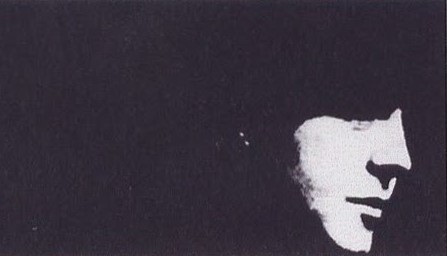 The sentiment of the lyrics as a whole, however, is very convincing. He’s so excited about this woman he’s just met that he can’t contain himself. He wants “all the world to see” what a perfect match they are. He also realizes how grateful he is for being so attentive on that day, because “had it been another day, I might have looked the other way” and missed the opportunity of a lifetime. Since the singer views himself as a loner (“I have been alone and I have missed things and kept out of sight”), this experience is very new to him (“I have never known the like of this”). At any rate, we can’t help but be swept away by his experience of being head-over-heels in love. The sentiment of the lyrics as a whole, however, is very convincing. He’s so excited about this woman he’s just met that he can’t contain himself. He wants “all the world to see” what a perfect match they are. He also realizes how grateful he is for being so attentive on that day, because “had it been another day, I might have looked the other way” and missed the opportunity of a lifetime. Since the singer views himself as a loner (“I have been alone and I have missed things and kept out of sight”), this experience is very new to him (“I have never known the like of this”). At any rate, we can’t help but be swept away by his experience of being head-over-heels in love.
American Releases
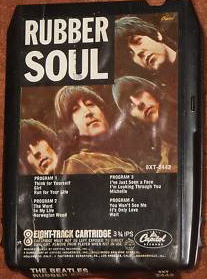 December 6th, 1965 was the release date for the American version of “Rubber Soul.” Because “I’ve Just Seen A Face” and “It’s Only Love” were the two remaining tracks from the British “Help!” album that hadn’t been heard in America as of yet, Capitol Records saw fit to include them both on the US “Rubber Soul” album, while four of the original tracks from that album were removed and put on hold for the time being. December 6th, 1965 was the release date for the American version of “Rubber Soul.” Because “I’ve Just Seen A Face” and “It’s Only Love” were the two remaining tracks from the British “Help!” album that hadn’t been heard in America as of yet, Capitol Records saw fit to include them both on the US “Rubber Soul” album, while four of the original tracks from that album were removed and put on hold for the time being.
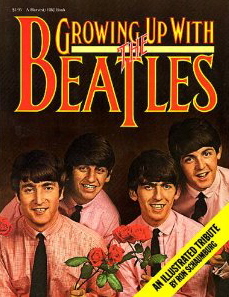 Capitol thought enough of “I’ve Just Seen A Face” to put it in the flattering position of opening track which, by overwhelming public opinion, was a very wise choice. It plays a big part in giving the illusion that “Rubber Soul” is an acoustic album. Ron Schaumburg, in his book “Growing Up With The Beatles,” describes this US release as “The Beatles "wood and smoke" album,” adding: “It generates for me a feeling of deep-colored, paneled rooms and warm fires, of wine and haze. There is a strong emphasis on acoustic instrumentation throughout, which makes me feel as if The Beatles are sitting around in my living room, un-miked and un-amped, playing spontaneously and with sincerely friendly feeling.” Capitol's version of "Rubber Soul" was released on an individual compact disc on January 21st, 2014, with both the new 1986 stereo mix and the original mono mix of the entire album contained on a single CD. Capitol thought enough of “I’ve Just Seen A Face” to put it in the flattering position of opening track which, by overwhelming public opinion, was a very wise choice. It plays a big part in giving the illusion that “Rubber Soul” is an acoustic album. Ron Schaumburg, in his book “Growing Up With The Beatles,” describes this US release as “The Beatles "wood and smoke" album,” adding: “It generates for me a feeling of deep-colored, paneled rooms and warm fires, of wine and haze. There is a strong emphasis on acoustic instrumentation throughout, which makes me feel as if The Beatles are sitting around in my living room, un-miked and un-amped, playing spontaneously and with sincerely friendly feeling.” Capitol's version of "Rubber Soul" was released on an individual compact disc on January 21st, 2014, with both the new 1986 stereo mix and the original mono mix of the entire album contained on a single CD.
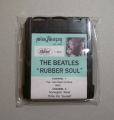 Sometime in 1967, Capitol released Beatles music on a brand new but short-lived format called "Playtapes." These tape cartridges did not have the capability to include entire albums, so two truncated four-song versions of "Rubber Soul" were released in this portable format, "I've Just Seen A Face" being on one of these. These "Playtapes" are highly collectable today. Sometime in 1967, Capitol released Beatles music on a brand new but short-lived format called "Playtapes." These tape cartridges did not have the capability to include entire albums, so two truncated four-song versions of "Rubber Soul" were released in this portable format, "I've Just Seen A Face" being on one of these. These "Playtapes" are highly collectable today.
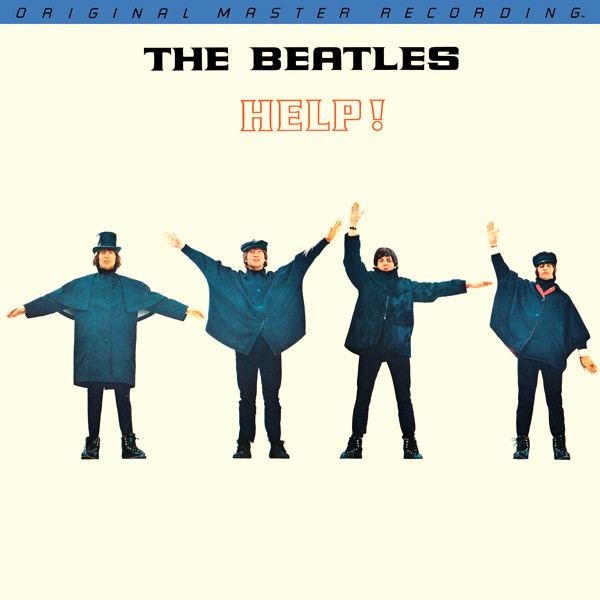 The first time the original British "Help!" album was made available in the US was the "Original Master Recording" vinyl edition released through Mobile Fidelity Sound Lab in January of 1986. This album included "I've Just Seen A Face" and was prepared utilizing half-speed mastering technology from the original master tape on loan from EMI. This version of the album was only available for a short time and is quite collectible today. The first time the original British "Help!" album was made available in the US was the "Original Master Recording" vinyl edition released through Mobile Fidelity Sound Lab in January of 1986. This album included "I've Just Seen A Face" and was prepared utilizing half-speed mastering technology from the original master tape on loan from EMI. This version of the album was only available for a short time and is quite collectible today.
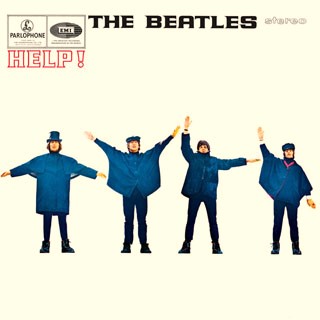 The next US release of “I’ve Just Seen A Face” didn’t occur until April 30th, 1987, when the “Help!” album was released on compact disc. This CD included George Martin’s new 1986 stereo mix of the song, which also was used on the vinyl edition that was released on July 21st, 1987. This new mix also graced the remastered re-release of the CD on September 9th, 2009 and the vinyl version on November 13th, 2012. The next US release of “I’ve Just Seen A Face” didn’t occur until April 30th, 1987, when the “Help!” album was released on compact disc. This CD included George Martin’s new 1986 stereo mix of the song, which also was used on the vinyl edition that was released on July 21st, 1987. This new mix also graced the remastered re-release of the CD on September 9th, 2009 and the vinyl version on November 13th, 2012.
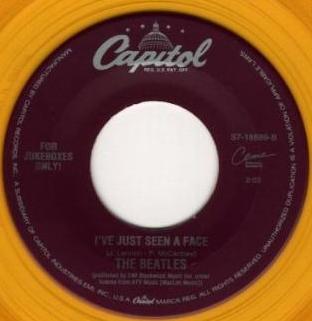 On January 24th, 1996, “I’ve Just Seen A Face” was officially released on a single for the first time in the US. The Capitol Cema series of singles “For Jukeboxes Only” paired the song with “You’ve Got To Hide Your Love Away” and printed it on orange vinyl. On January 24th, 1996, “I’ve Just Seen A Face” was officially released on a single for the first time in the US. The Capitol Cema series of singles “For Jukeboxes Only” paired the song with “You’ve Got To Hide Your Love Away” and printed it on orange vinyl.
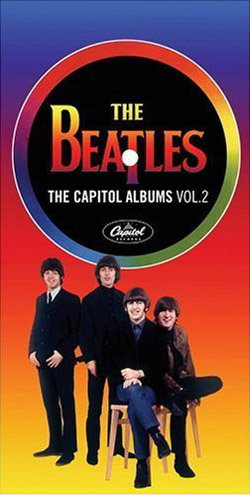 Capitol released the second in a small series of box sets on April 11th, 2006 entitled “The Capitol Albums, Vol. 2.” This set included the entire American “Rubber Soul” album in both stereo and mono as originally heard in 1965, but with one small exception. The mono mix of the song as included on original mono copies of the album in 1965 contained the unintentional voice during the fade-out of the song, while the early pressings of this box set accidentally contained a “fold-down” mix of the stereo version of the song. Therefore, the quiet voice at the songs’ end was not there. (A “fold-down” mix is where both channels of the stereo mix are combined to create a simulated mono mix.) This mistake was corrected in later pressings of the box set. Capitol released the second in a small series of box sets on April 11th, 2006 entitled “The Capitol Albums, Vol. 2.” This set included the entire American “Rubber Soul” album in both stereo and mono as originally heard in 1965, but with one small exception. The mono mix of the song as included on original mono copies of the album in 1965 contained the unintentional voice during the fade-out of the song, while the early pressings of this box set accidentally contained a “fold-down” mix of the stereo version of the song. Therefore, the quiet voice at the songs’ end was not there. (A “fold-down” mix is where both channels of the stereo mix are combined to create a simulated mono mix.) This mistake was corrected in later pressings of the box set.
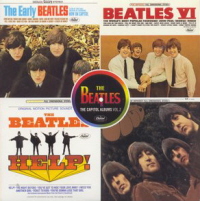 Just prior to the release of the above box set, Capitol distributed a CD sampler to radio stations containing eight songs from the set in both stereo and mono. “I’ve Just Seen A Face” was the last of these eight songs. Just prior to the release of the above box set, Capitol distributed a CD sampler to radio stations containing eight songs from the set in both stereo and mono. “I’ve Just Seen A Face” was the last of these eight songs.
For those who want to assuredly own both the original 1965 mono and stereo mixes of “I’ve Just Seen A Face,” they might want to purchase the box set “The Beatles In Mono,” since this collection includes the entire British “Help!” album in both mono and stereo as released in December of 1965. This box set was released on CD on September 9th, 2009 and on vinyl on September 9th, 2014.
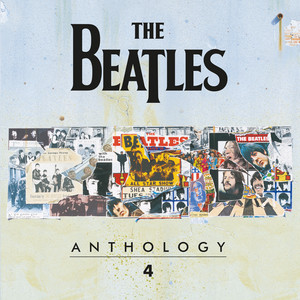 On November 21st, 2025, "Anthology 4" was released on both CD and vinyl, this album also being made available within the "Anthology Collection" box set on CD and on vinyl. "Take three" of "I've Just Seen A Face" as recorded at EMI Studio Two on June 14th, 1965, as detailed above, was included on this release. On November 21st, 2025, "Anthology 4" was released on both CD and vinyl, this album also being made available within the "Anthology Collection" box set on CD and on vinyl. "Take three" of "I've Just Seen A Face" as recorded at EMI Studio Two on June 14th, 1965, as detailed above, was included on this release.
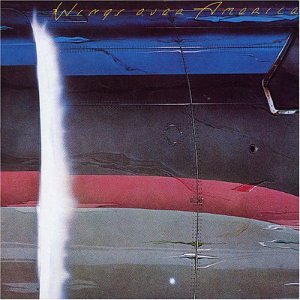 Not to be forgotten are two live albums released by Paul McCartney that feature "I've Just Seen A Face." With his current band Wings, the triple-album “Wings Over America” includes the song, which came out on December 10th, 1976. The second album was the June 4th, 1991 released album “Unplugged (The Official Bootleg),” which included a fully acoustic rendition of the song by Paul and his new touring band. Not to be forgotten are two live albums released by Paul McCartney that feature "I've Just Seen A Face." With his current band Wings, the triple-album “Wings Over America” includes the song, which came out on December 10th, 1976. The second album was the June 4th, 1991 released album “Unplugged (The Official Bootleg),” which included a fully acoustic rendition of the song by Paul and his new touring band.
Live Performances
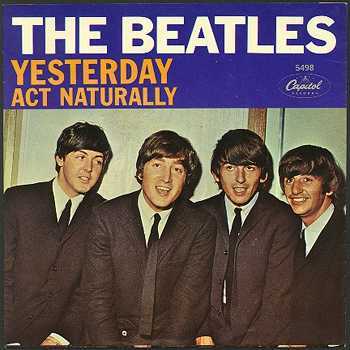 As interesting as it might have been to have The Beatles whip out their acoustic guitars and do an intimate performance of “I’ve Just Seen A Face” during their 1966 tours, this was something that just didn’t happen back then. They were known to put on a riveting electric show and that’s just what they continued to do for their final year of touring. Even the love ballad “Yesterday” was played with electric guitars. As interesting as it might have been to have The Beatles whip out their acoustic guitars and do an intimate performance of “I’ve Just Seen A Face” during their 1966 tours, this was something that just didn’t happen back then. They were known to put on a riveting electric show and that’s just what they continued to do for their final year of touring. Even the love ballad “Yesterday” was played with electric guitars.
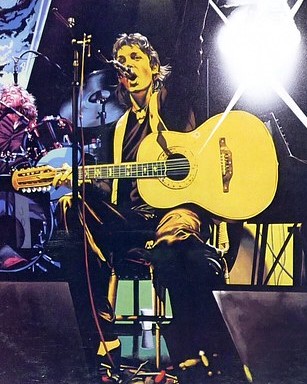 But with the '70s came the more established trend of including a small intimate acoustic set within a rock concert. Paul McCartney and Wings did this in their “Wings Over The World Tour” of 1975 and 1976, featuring a re-vamped “I’ve Just Seen A Face” that Paul many times introduced as a “skiffle” song. A recording of the song made sometime between May and June of 1976 was included on the “Wings Over America” live album. Interestingly, their concert rendition had many noticeable differences, such as the omission of the intricate introduction as well as the second verse, not to mention repeating the refrain more than usual. Nonetheless, it was refreshing to hear Paul delve back into The Beatles catalog a little. But with the '70s came the more established trend of including a small intimate acoustic set within a rock concert. Paul McCartney and Wings did this in their “Wings Over The World Tour” of 1975 and 1976, featuring a re-vamped “I’ve Just Seen A Face” that Paul many times introduced as a “skiffle” song. A recording of the song made sometime between May and June of 1976 was included on the “Wings Over America” live album. Interestingly, their concert rendition had many noticeable differences, such as the omission of the intricate introduction as well as the second verse, not to mention repeating the refrain more than usual. Nonetheless, it was refreshing to hear Paul delve back into The Beatles catalog a little.
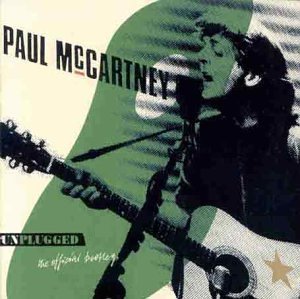 Seeing that the song fit nicely in an acoustic setting, McCartney included it on his appearance on MTV “Unplugged” on January 25th, 1991, a recording of this ending up on his “Unplugged (The Official Bootleg)” album. In promotion of this album, Paul and his current band played six unplugged gigs in late 1991 that also included the song, this mini "Unplugged Tour" stretching from May 8th to July 24th of that year. Seeing that the song fit nicely in an acoustic setting, McCartney included it on his appearance on MTV “Unplugged” on January 25th, 1991, a recording of this ending up on his “Unplugged (The Official Bootleg)” album. In promotion of this album, Paul and his current band played six unplugged gigs in late 1991 that also included the song, this mini "Unplugged Tour" stretching from May 8th to July 24th of that year.
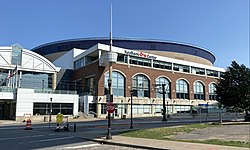 Paul McCartney’s “2004 Summer Tour,” which stretched a brief month from May 25th to June 26th of that year, also featured the song. His "Up And Coming Tour" periodically included the song as well, this beginning on March 28th, 2010 (Glendale, Arizona) and completing on June 10th, 2011 (Las Vegas, Nevada). Paul's "Out There!" tour also included the song, which stretched from May 4th, 2013 (Bezo Horizonte, Brazil) to October 22nd, 2015 (at the First Niagara Center in Buffalo, New York). The song was then part of his "One On One" tour, this beginning on April 13th, 2016 (Fresno, California) and completing on December 16th, 2017 (Aukland, New Zealand). Then came the song's inclusion in Paul's "Freshen Up" tour, which stretched from September 17th, 2018 (Quebec City, Canada) to July 13th, 2019 (Los Angeles, California). Most dates of his "Got Back" tour included the song as well, this tour beginning on April 28th, 2022 (Spokane, Washington) and ending on December 19th, 2024 (London, England). Paul McCartney’s “2004 Summer Tour,” which stretched a brief month from May 25th to June 26th of that year, also featured the song. His "Up And Coming Tour" periodically included the song as well, this beginning on March 28th, 2010 (Glendale, Arizona) and completing on June 10th, 2011 (Las Vegas, Nevada). Paul's "Out There!" tour also included the song, which stretched from May 4th, 2013 (Bezo Horizonte, Brazil) to October 22nd, 2015 (at the First Niagara Center in Buffalo, New York). The song was then part of his "One On One" tour, this beginning on April 13th, 2016 (Fresno, California) and completing on December 16th, 2017 (Aukland, New Zealand). Then came the song's inclusion in Paul's "Freshen Up" tour, which stretched from September 17th, 2018 (Quebec City, Canada) to July 13th, 2019 (Los Angeles, California). Most dates of his "Got Back" tour included the song as well, this tour beginning on April 28th, 2022 (Spokane, Washington) and ending on December 19th, 2024 (London, England).
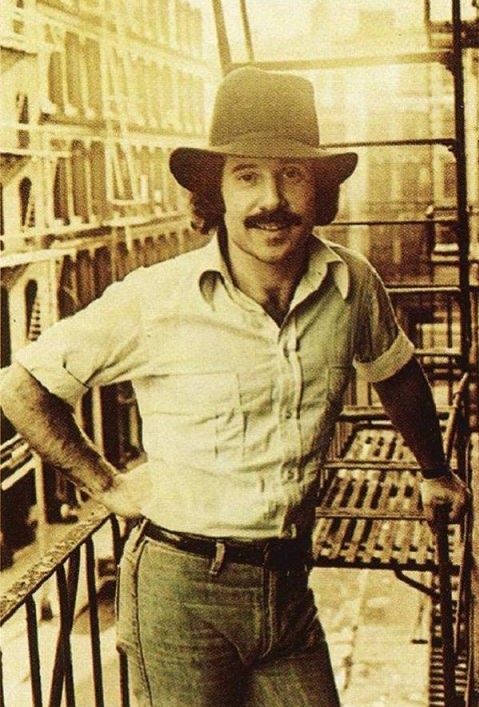 Paul performed a special trancated acoustic version of "I've Just Seen A Face" on February 15th, 2015 for the Saturday Night Live 40th Anniversary special. During the live broadcast, McCartney and Paul Simon appear on stage together to "audition" to Steve Martin for a spot on the show, the comedian saying, "Let's see what you got and we'll let the audience decide." After the duo performs one verse and chorus of the song, which elicits great applause from the studio audience, Steve Martin replies, "Well, you heard 'em, a resounding 'No!'" As they both dejectedly leave the stage, Paul Simon tells McCartney, "Told you we should have done 'Sound Of Silence.'" Paul performed a special trancated acoustic version of "I've Just Seen A Face" on February 15th, 2015 for the Saturday Night Live 40th Anniversary special. During the live broadcast, McCartney and Paul Simon appear on stage together to "audition" to Steve Martin for a spot on the show, the comedian saying, "Let's see what you got and we'll let the audience decide." After the duo performs one verse and chorus of the song, which elicits great applause from the studio audience, Steve Martin replies, "Well, you heard 'em, a resounding 'No!'" As they both dejectedly leave the stage, Paul Simon tells McCartney, "Told you we should have done 'Sound Of Silence.'"
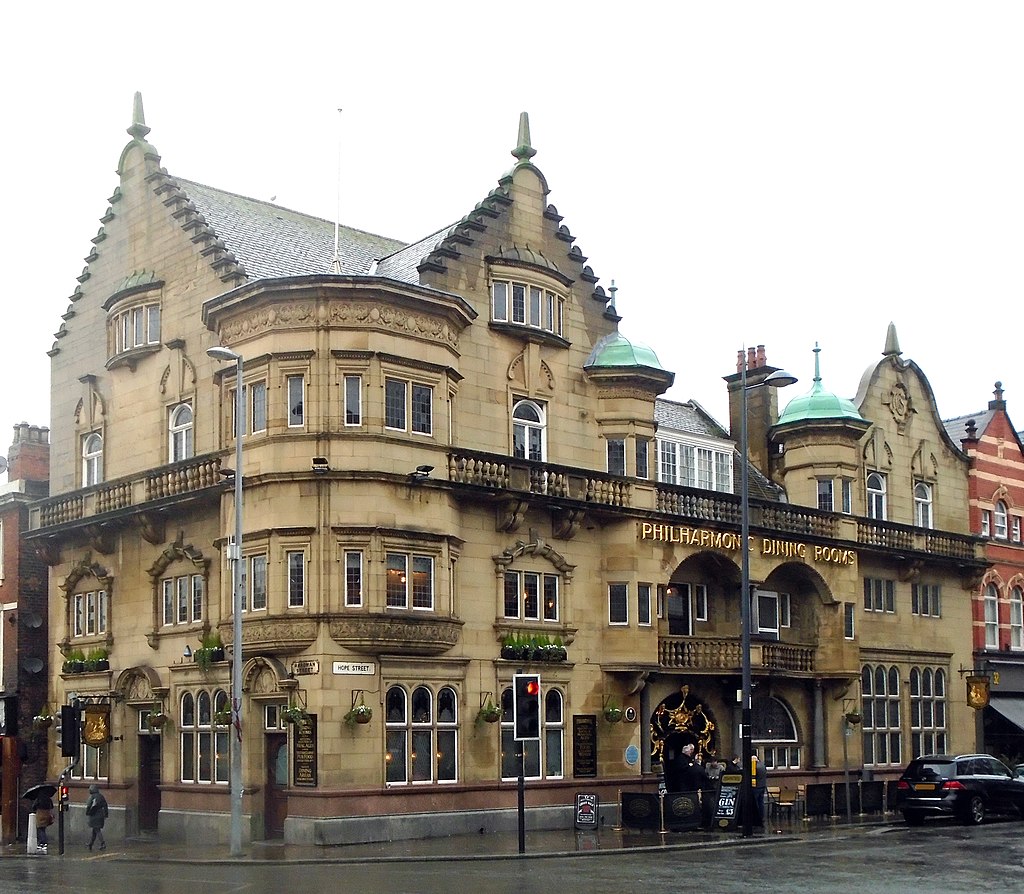 Paul also performed "I've Just Seen A Face" at a secret gig at the Philharmonic Pub in Liverpool on June 9th, 2018 for a special segment on "The Late Late Show With James Corden." This performance, however, did not air on the June 21st, 2018 episode as planned. Paul also performed "I've Just Seen A Face" at a secret gig at the Philharmonic Pub in Liverpool on June 9th, 2018 for a special segment on "The Late Late Show With James Corden." This performance, however, did not air on the June 21st, 2018 episode as planned.
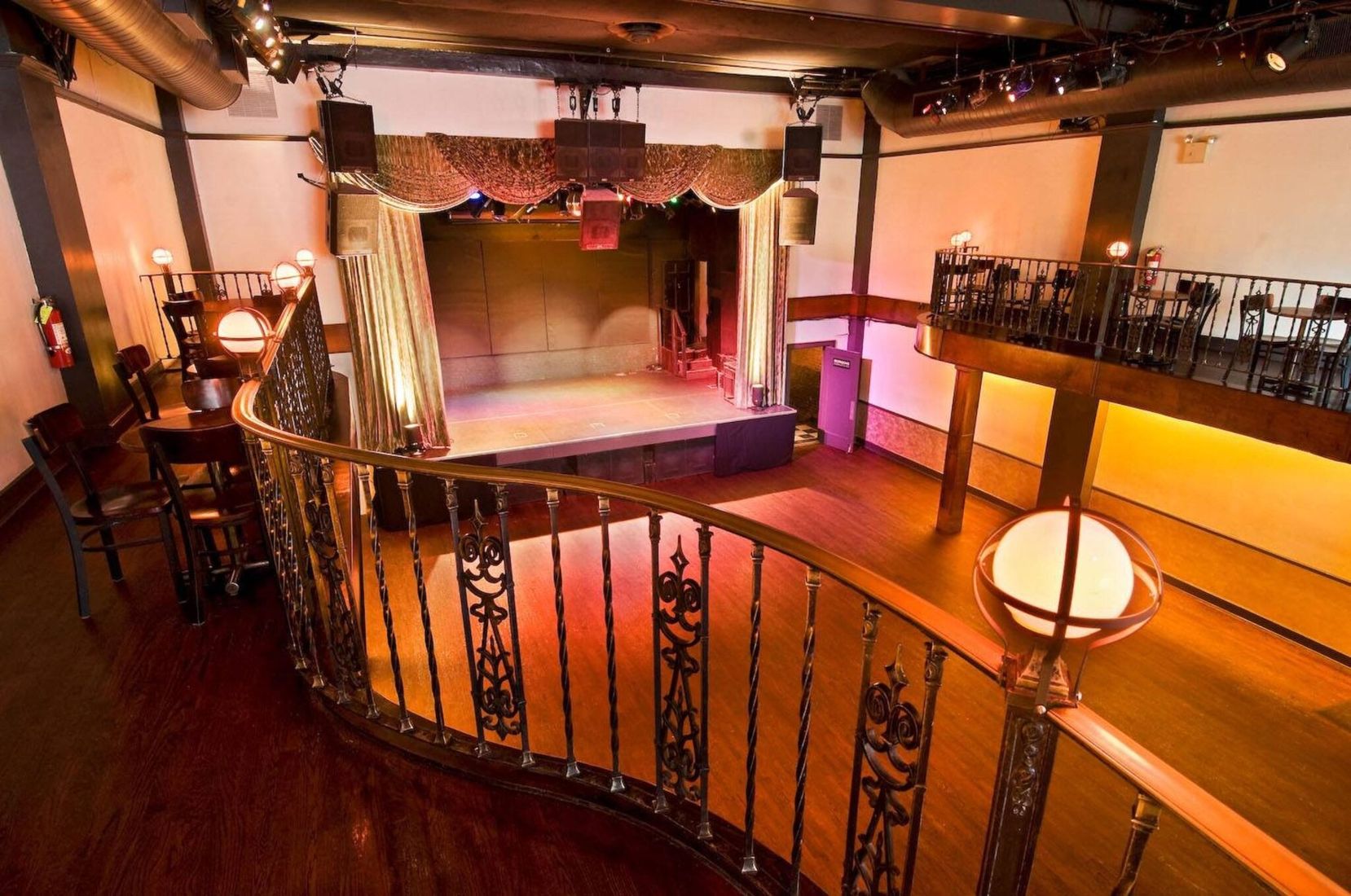 Interestingly, McCartney and his group played a surprise three night residency at the Bowery Ballroom in New York City on February 11th, 12th and 14th, 2025, this final night being Valentine's Day. Paul's group played "I've Just Seen A Face" at each of these performances at this 575-capacity Manhattan venue. Interestingly, McCartney and his group played a surprise three night residency at the Bowery Ballroom in New York City on February 11th, 12th and 14th, 2025, this final night being Valentine's Day. Paul's group played "I've Just Seen A Face" at each of these performances at this 575-capacity Manhattan venue.
Conclusion
While “I’ve Just Seen A Face” was the first fully acoustic song the Beatles ever recorded, they continued this practice immediately. The very same day the band recorded this song they also recorded their second fully acoustic song, namely the classic “Yesterday,” which featured only Paul on acoustic guitar along with an acoustic string quartet.
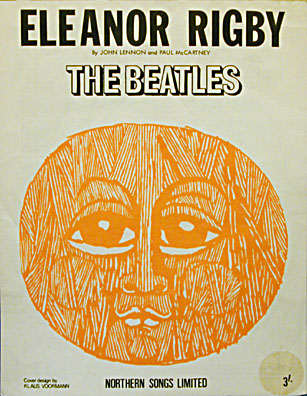 This then became an occasional trend for The Beatles, evidenced afterwards with the string arrangements of “Eleanor Rigby” and "She's Leaving Home," and then most notably with their acoustic guitar-based “White Album” recordings “Blackbird,” “I Will” and “Julia.” Many other songs may come to mind but we have to remember that whenever a bass guitar is present, it’s not a fully acoustical recording. This then became an occasional trend for The Beatles, evidenced afterwards with the string arrangements of “Eleanor Rigby” and "She's Leaving Home," and then most notably with their acoustic guitar-based “White Album” recordings “Blackbird,” “I Will” and “Julia.” Many other songs may come to mind but we have to remember that whenever a bass guitar is present, it’s not a fully acoustical recording.
What most will admit, though, about “I’ve Just Seen A Face,” fans and critics alike, is that they convincingly adapted to a country-and-western style without sounding like a cheap imitation of that genre. In fact, even though they had the ability to transfigure into any style they wanted throughout their career, their whole body of work continues to be labeled as “beatlesque.” No matter what they did, it all sounds like The Beatles!
Song Summary
“I’ve Just Seen A Face”
Written by: John Lennon / Paul McCartney
-
Song Written: Melody: possibly 1957-1958 - Lyrics: probably May/June 1965
-
Song Recorded: June 14, 1965
-
First US Release Date: December 6, 1965
-
-
US Single Release: Capitol Cema #S7-18889-A (orange vinyl)
-
Highest Chart Position: n/a
-
British Album Release: Parlophone #PCS 3071“Help!”
-
Length: 2:04
-
Key: A major
-
Producer: George Martin
-
Engineers: Norman Smith, Phil McDonald
Instrumentation (most likely):
-
Paul McCartney - Lead and Harmony Vocals, Lead and Rhythm Guitar (1964 Epiphone Texan FT-79)
-
George Harrison – Lead and Rhythm Guitar (1964 Framus Hootenanny 5/024 acoustic 12-string)
-
John Lennon - Rhythm Guitar (1964 Gibson J-160E)
-
Ringo Starr – Drums (1964 Ludwig Super Classic Black Oyster Pearl) with brushes, maracas
Written and compiled by Dave Rybaczewski
|
IF YOU WOULD LIKE TO MAKE A DONATION TO KEEP THIS WEBSITE UP AND RUNNING, PLEASE CLICK BELOW!
Sign Up Below for our MONTHLY BEATLES TRIVIA QUIZ!
|